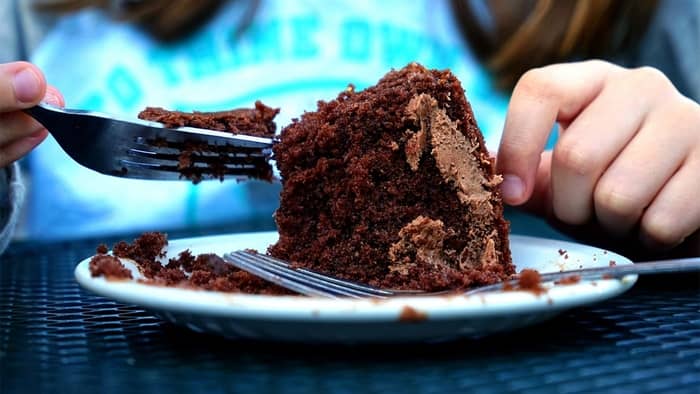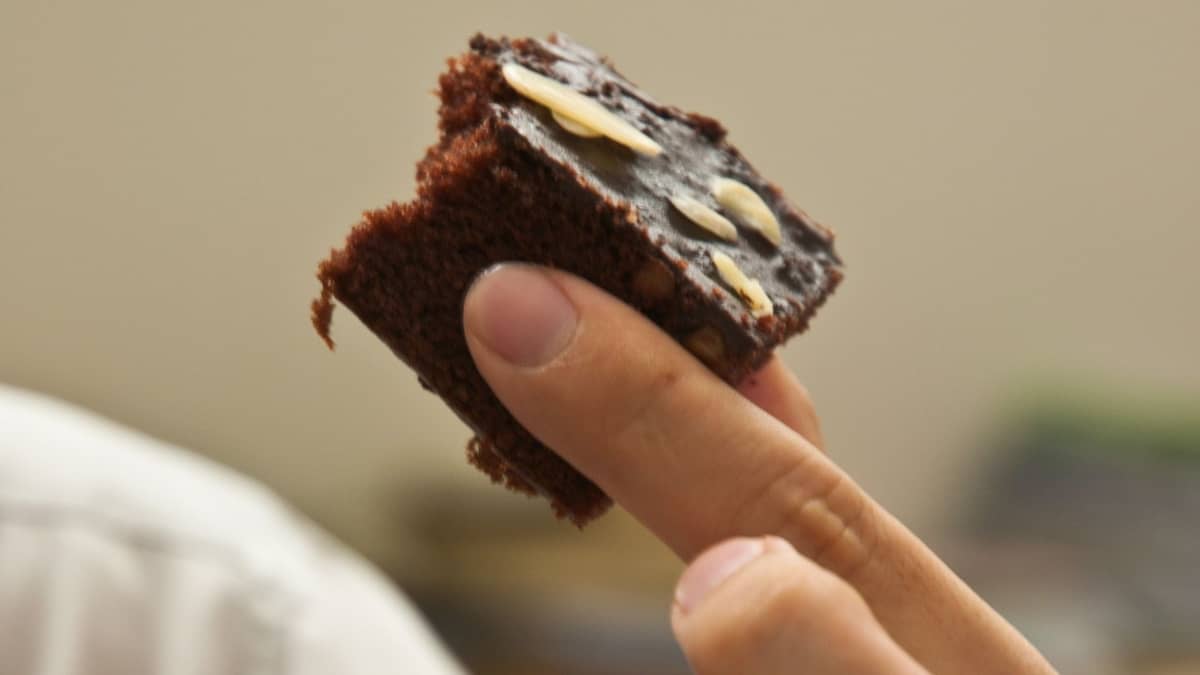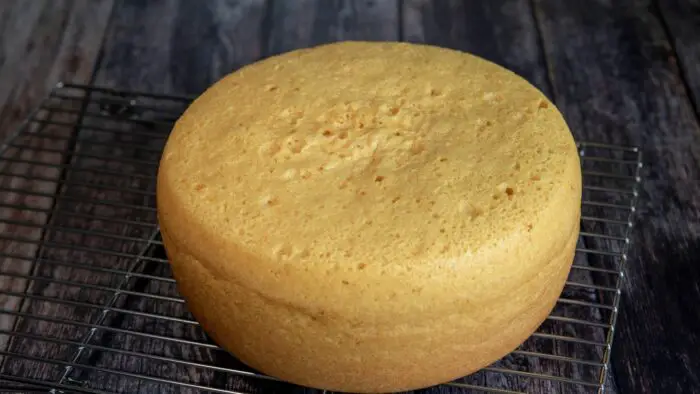Last Updated on February 23, 2023
If you enjoy baking, you might wonder, what a stodgy cake is in baking. It is a term you might have heard before if you enjoy watching The Great British Baking Show. Though it might sound like a weird word, it is used in the world of baking, particularly in the United Kingdom.
If you live in the United States, claggy might be a word you are not familiar with, even if you enjoy baking. There are a few baking terms that are more commonly used in the United Kingdom than in the United States. However, these terms can still be helpful to know if you are an avid baker.
What Does Stodgy Mean in Baking?
Stodgy is another common baking term in the United Kingdom that many Americans may not be familiar with. It is similar to claggy and sometimes people confuse the two.
When a dessert is stodgy, it is dense, thick, and wet, when the texture shouldn’t be like that. It can refer to bread or cake that is too heavy or rich in its texture and flavor. If a dessert is stodgy, it is generally too dense, making it unpleasant to eat.
If a cake is too rich and too thick, with a texture that is too dense, one might refer to it as stodgy. Stodgy desserts are the opposite of light and airy desserts. In some cases, if a dessert is stodgy, it still may taste alright. However, sometimes stodgy can affect the flavor as it can be too rich.
What is a Stodgy Cake?
A stodgy cake refers to a cake that is too heavy or rich in terms of volume. Most cakes are supposed to be light and fluffy, with a delicate crumb. A stodgy cake does not have the desirable texture that a cake should have.
When a cake is described as stodgy it is not considered to be a good thing. A stodgy cake does not have a desirable consistency. While the flavor still may taste good, the texture will not be right.
In some cases, a stodgy cake may have a thick, wet texture that can even be greasy. This is the opposite of what you want from a cake. Stodgy is not a term you want to be used to describe your cake.
What Causes a Stodgy Cake?
There are a few different things that can cause a stodgy cake. Overmixing your cake can cause it to have a thick, heavy texture that is the opposite of the light and fluffy texture cakes are supposed to have. Be sure to only mix your cake until the ingredients are fully incorporated or otherwise specified by the recipe to avoid overmixing.
Another reason that a cake can come out stodgy is from underbaking. If a cake isn’t baked for long enough it can have a thick, wet texture. Be sure to use a toothpick to test the doneness of your cake to ensure it has baked for long enough.
In addition, too much flour can lead to a heavy, dense consistency in your cake. Be sure to carefully measure out your flour to prevent adding too much. Using a kitchen scale is the most accurate way to measure out your flour when baking.
Another reason that a cake may be stodgy is that you added too much liquid to your cake. This can result in a heavy, wet cake, so be sure to carefully measure out all of your liquid ingredients.
Cakes can also become stodgy when leavening agents are left out or are expired. Leavening agents like baking powder and baking soda are key to creating a light, fluffy cake. Be sure that your leavening agents are not expired before adding them to your cake batter.
Also, be sure to not over-grease your baking pan. While greasing is important to help prevent your baked goods from sticking, too much cooking spray or butter can result in a greasy bottom. To help prevent this, you can line your baking pans with parchment paper instead.
What Does Claggy Mean in British Baking?
Claggy is a lesser-used baking term that even some professional bakers are not familiar with. It is more commonly used in the United Kingdom than it is in the United States. However, it is a term that some people may have heard on The Great British Baking Show, even if they are not familiar with what the term means in baking.
Claggy desserts are cloying and gelatinous, in some cases, they may even be lumpy too. If someone refers to a brownie as being claggy, the cake would likely be sticking to the roof of their mouth and have a wet consistency as it absorbs moisture from their mouth, similar to that of clay.
If someone says your dessert is claggy, that is not a good thing. Outside of baking, it means being cloying or muddy, so imagine that your baked good has a thick, lumpy, sticky texture like mud.
Claggy only has to do with texture and not taste. Your dessert could have a claggy texture, but the flavor can still be delicious. If a dessert is claggy, probably something went wrong during preparing the ingredients or when baking.
Claggy vs Stodgy
If you get the terms claggy vs stodgy confused, don’t worry, you are not alone. The two terms are similar and both relate to the consistency of baked goods, particularly cakes.
Stodgy foods tend to be dense, heavy, and wet. Stodgy foods tend to be thick, sticky, and dry. Oftentimes, foods that are cloggy will stick to the top of your mouth, which is not something that typically happens with stodgy foods.
Sometimes, if food is cloggy it will also be lumpy as well. Stodgy food may have a greasy bottom that creates a wet, heavy baked good.
Kitzini Silicone Baking Mat Set
Other Lesser Known Baking Terms to Know
Stodgy and claggy are too lesser-known baking terms. However, there are several other baking terms that many people are not familiar with as well. These terms can be beneficial to know if you are an avid baker or simply just like to watch baking shows.
1. Fool
Though most people know the term fool as someone who acts unwisely, it is also a term used in baking. In the world of desserts, a fool is a type of English dessert that involves mixing pureed, stewed fruit into the sweet custard. Traditionally, gooseberries are used, however, other fruits such as strawberries can be used as well.
Though traditionally a sweet custard is used, many modern recipes use whipping cream instead. Oftentimes, a flavoring agent such as vanilla or rose water is used.
2. Traybakes
Traybakes refer to any type of dessert that is baked into a square or rectangular pan and is then cut into serving-size pieces. Oftentimes, traybakes are brownies or blondies.
3. Proving
Proving, also known as proofing, is a yeast bread’s final rise after shaping. It is the final rise a bread has before baking and it is important for the development of the dough. Slightly heated proving drawers can accelerate the rising process.
4. Choux
Choux is a simple yet popular type of pastry that consists of butter, water, flour, and eggs. It is commonly used for cream puffs, churros, beignets, and eclairs.
5. Frangipane
Frangipane is not to be confused with marzipan. Frangipane is a spreadable form of pastry cream that includes an almond-paste base with sugar, butter, and eggs.
6. Puff pastry
The puffpastry has several layers of butter folded into the dough to give it a delicious flaky consistency. It is a light pastry, similar to that of a croissant.
7. Rough puff
Rough puff is like a shorthand form of puff pastry. Instead of folding the butter into layers of the dough, the butter is mixed into the dough and then folded a few times.
8. Shortcrust
Shortcrust is the base of quiches, pies, and tarts. Since it doesn’t contain any leavening agents, it will not puff up as it bakes in the oven.
9. Treacle
Made from partly refined sugar, treacle is a dark, thick sticky term. It is very similar to molasses, however, the two sometimes have different uses.
Understanding Stodgy and Claggy in Baking

Claggy and stodgy are two terms commonly used in the United Kingdom to describe baked goods. When a dessert is claggy, it is sticky and thick, possibly containing lumps as well. Foods that are claggy often stick to the roof of your mouth and have a consistency similar to that of clay.
On the other hand, if a dessert is stodgy, it is dense, thick, and wet. It can occur in desserts, like bread or cakes, when they are too heavy or rich. However, stodgy foods are moister than foods that are claggy.
Do you have any questions regarding what claggy means in baking? If so, please ask any questions regarding claggy and other lesser-known baking terms down below.
Frequently Asked Questions
What Does Claggy Mean in Baking?
No matter how much you bake, it can be beneficial to know the claggy cake definition. In baking, claggy refers to the overall texture of a baked good. Desserts that are claggy with an undesirable stickiness and are often too thick in texture.
What Does Stodgy Mean in Baking?
When a dessert is stodgy, it is dense, thick and wet, when the texture shouldn't be like that. It can refer to bread or cake that is too heavy or rich regarding its texture and flavor. If a dessert is stodgy, it is generally too dense, making it unpleasant to eat.

Ever since she was a young girl, Anna has been a lover of desserts. As an adult, she enjoys
baking a variety of desserts from cakes, cookies, brownies, bread, and more from scratch. She
enjoys sharing her passion for baking with others who also have a sweet tooth. From properly
measuring ingredients to making sure they are the correct temperature, Anna knows the
importance small details can make in baking. She wants to share her experience with others in
hopes they can make the most delicious baked goods. When she’s not busy blogging, Anna
enjoys trying new recipes in the kitchen.



